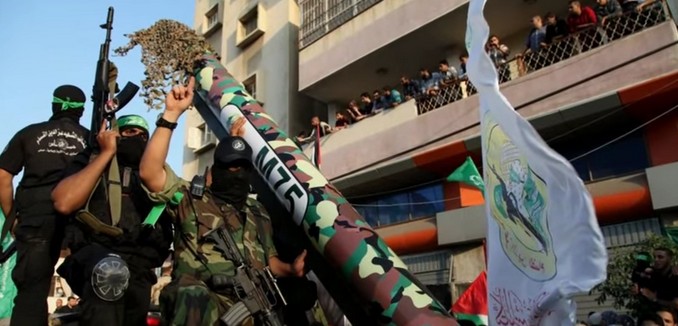In interview yesterday, New York Times photographer Tyler Hicks confirmed many of the charges Israel has made about the way that Hamas uses human shields to fight against Israel and how its terrorists blend in with the civilian population. After stating that his previous experience (during Operation Pillar of Defense) didn’t prepare him for the level of casualties he saw during the first two weeks of Operation Protective Edge, Hicks acknowledges:
I was stationed in Gaza, and covered the Palestinian side of the war where you saw most of the casualties. One of the reasons for that is because the Hamas fighters are living among the civilian population. Where you have a separate army that is fighting from a front line, it is easy to differentiate between soldiers and civilians.
Despite the acknowledgement that “Hamas fighters are living among the civilian population,” Hicks later asserts:
This is a war fought largely behind the scenes. Hamas fighters are not able to expose themselves. If they were to even step a foot on the street they would be spotted by an Israeli drone and immediately blown up. We don’t see those fighters. They are operating out of buildings and homes and at night. They are moving around very carefully. You don’t see any signs of authority on the streets. If you can imagine every police officer, every person of authority in America gone, this is what that would look like. If we had access to them, we would be photographing them. I never saw a single device for launching the rockets to Israel. It’s as if they don’t exist.
While Hicks may be overstating Israel’s operational capability, here he’s deflecting criticism that he’s never photographed Hamas fighters. His answer that he hasn’t seen any, is somewhat undermined by what he says next:
Sometimes people assume that you can have access to everything, that you can see everything. But the fighters are virtually invisible to us. What we do as photographers is document what we can to show that side of the war. There are funerals, there are people being rushed to the hospital, but you can’t differentiate the fighters from the civilians. They are not wearing uniforms. If there is someone coming into the hospital injured, you can’t tell if that’s just a shopkeeper or if this is someone who just fired a rocket towards Israel. It’s impossible to know who’s who. We tried to cover this as objectively as possible.
But if a photographer on the scene “can’t differentiate the fighters from the civilians,” how can a reporter not on the scene? Hicks could ask questions about the identity of the victims to clarify. No doubt he would not be told the truth as the first rule of Hamas’ social media guidelines is that all the dead are “innocent civilians.” The problem with Hicks’ defense of his objectivity is that his pictures say “civilian casualties,” but he and his reporting colleagues has no way of verifying that this is so. They are conveying one part only of “one side of the war.” David Bernstein of the Volokh Conspiracy recently republished forty questions every journalist covering the war between Israel and Hamas should address. Three of them were:
12. When Israeli authorities say that most of the dead in Gaza are terrorists, and Hamas says most of the dead in Gaza are civilians, how do you differentiate? 13. When Hamas Health Ministry statistics contradict Hamas’ own propaganda and reveal that mostly men of fighting age have died so far in Gaza, does it give you pause for thought? 14. Is an underage armed terrorist still counted as a terrorist or a child when killed? Or both? Do you explain to your readers how this is possible?
Hicks was already out of Gaza when the interview took place yet it seems that these questions didn’t cross his mind. The failure to answer these questions that he was unwilling to contextualize what he was photographing. The problem is, as Alan Dershowitz pointed out recently:
The media’s exclusive focus on the death toll in Gaza—without explaining that it is largely Hamas’ fault and part of its media strategy—incites hatred and anti-Semitism around the world.
Hicks, no longer in Gaza, confirmed Israeli charges of Hamas’ using human shields and of failing to distinguish their fighters from civilians. However, he failed to provide a context for his pictures. That means his pictures lacked objectivity and could be viewed in the words of one critic to be contributing to Hamas’ war strategy. [Photo: Today World News / YouTube ]




